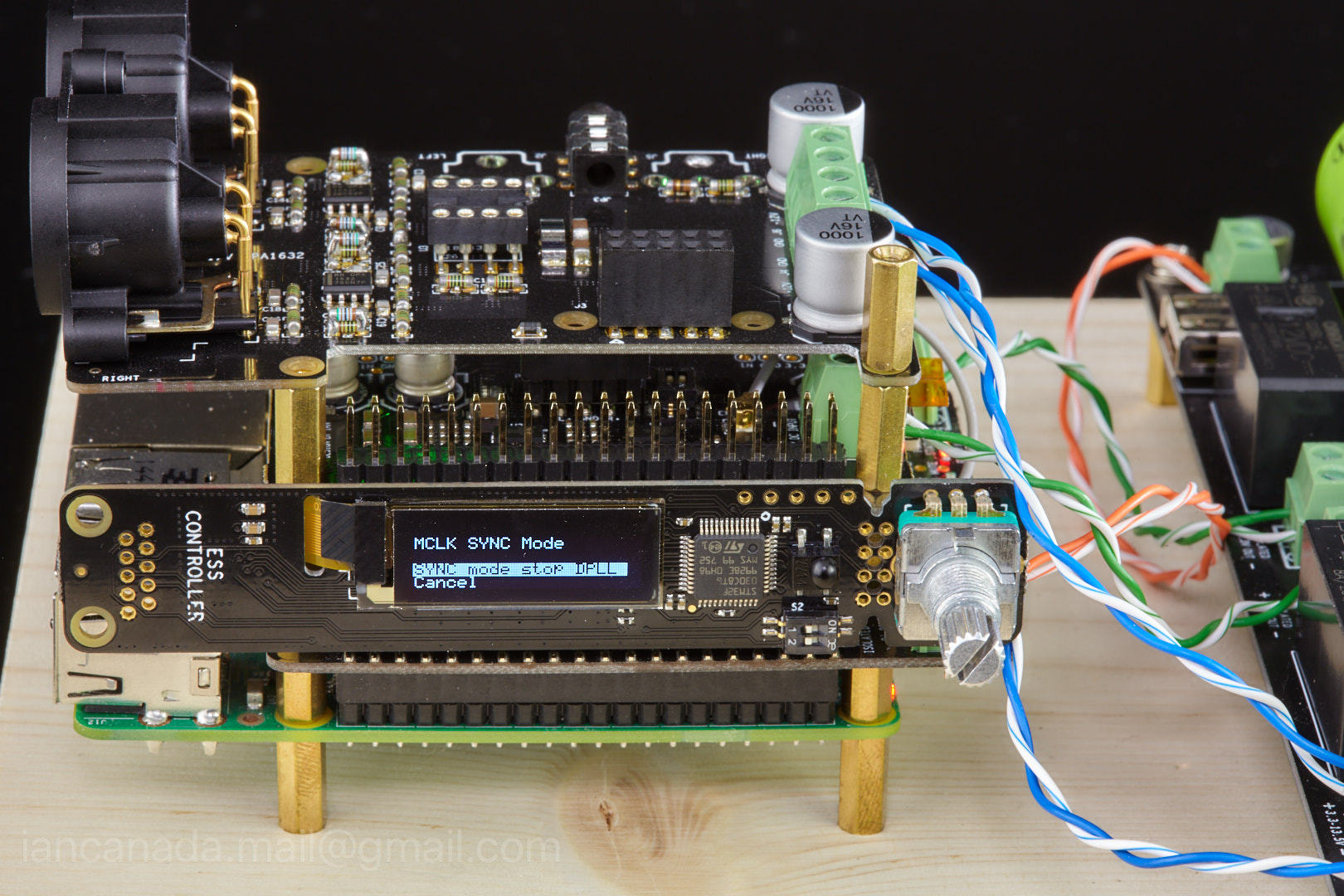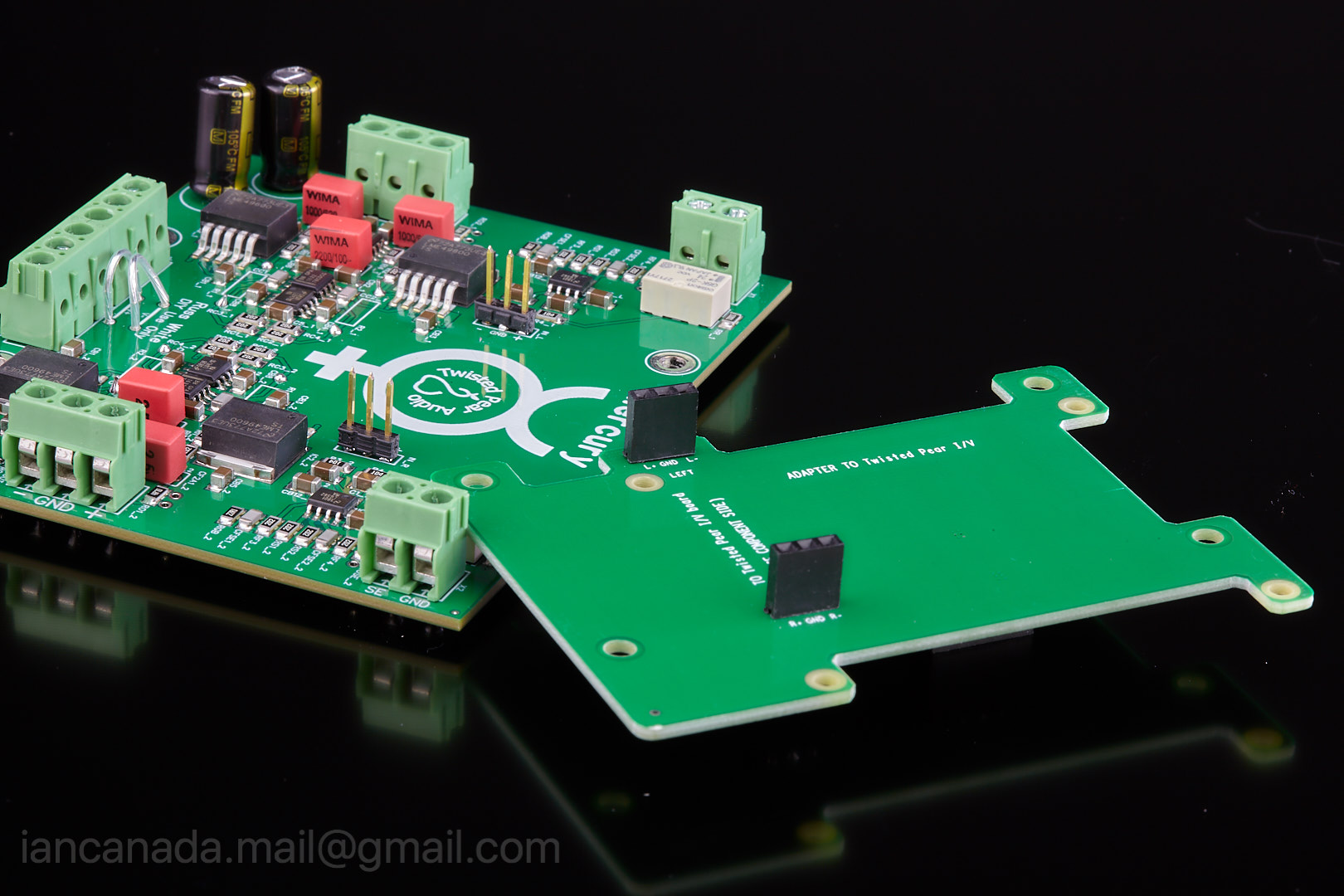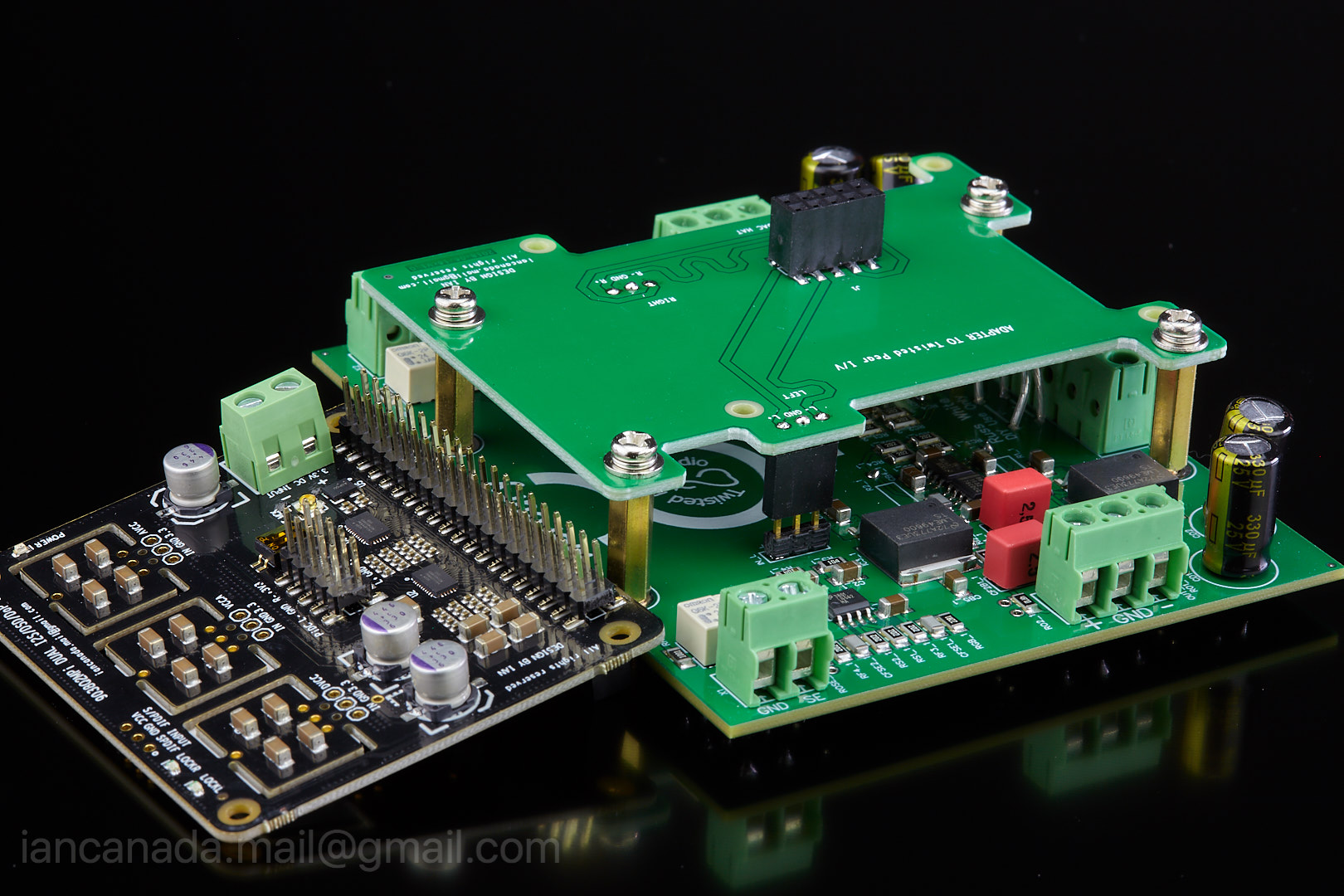Again, I'm highly recommended you trying the true synchronize clock mode of ESS DAC by stopping the internal DPLL.
The artificial sound comes from the ASRC for sure.
Hi Ian,
Not sure if by 'true synchronize' mode you mean something that sounds different from Katana master mode operation with the isolator 1.2? They say the Katana jitter is the lowest ever measured at ASR. Since I am a Katana reviewer, I have heard it with isolator running as an RPi hat. I agree the low jitter without ASRC sounds excellent.
However, I have also found that under some very special circumstances, ASRC can sound as good as ultra-low jitter without ASRC. What I don't know so far is how to make ASRC always sound that good. It's still a problem to work on.
Regarding your latest ESS dacs, when you decide to finalize the design then I would very much like to arrange to hear one. Let's keep in touch so I know when I need to act to make that happen.
Regards,
Mark
@BryceJ
Thanks for your good news. I'll try it and you will have my update.
Does the new Moode support 384KHz and DSD64 again?
Regards,
Ian
Hi Ian,
For the best answer, please contact Tim.
My understanding is that Moode supports whatever the current official kernel supports. There are no experimental kernels the Moode version 4 releases.
Again, I'm highly recommended you trying the true synchronize clock mode of ESS DAC by stopping the internal DPLL.
Regards,
Ian
How do I stop the DPLL ?
How do I...
The information is in the data sheet, which you should be able to get a copy of if you are willing to sign an NDA.
The information is in the data sheet, which you should be able to get a copy of if you are willing to sign an NDA.
ok, thanks!
How do I stop the DPLL ?
@ichiban
I did the ES9038Q2M true sync setting from the OLED UI on the ESS controller. Please see the picture for details.

ES9038Q2mDualTrueSync by Ian, on Flickr
Regards,
Ian
@ichiban
I did the ES9038Q2M true sync setting from the OLED UI on the ESS controller. Please see the picture for details.
Regards,
Ian

@androa76
Thank you so much for your interest.
To follow diyAudio Rules, I would be much appreciated if you can help me the keeping this thread pure R&D posts with focusing on design ideas, principles, R&D progress and experiences sharing. Please see my PM for details.
Thanks again,
Ian
Thank you so much for your interest.
To follow diyAudio Rules, I would be much appreciated if you can help me the keeping this thread pure R&D posts with focusing on design ideas, principles, R&D progress and experiences sharing. Please see my PM for details.
Thanks again,
Ian
@Greg Stewart
Hi Greg,
I'm having something that you might be interested in.
Yes, it's the adapter PCB to Buffalo I/V stages. With it, all Buffalo compatible I/V stage can be adapted to my ESS DAC HATs. Will have more fun to play with
Thank you so much for the super good suggestion

BuffaloIvAdapter2 by Ian, on Flickr

BuffaloIvAdapter1 by Ian, on Flickr
Regards,
Ian
Hi Greg,
I'm having something that you might be interested in.
Yes, it's the adapter PCB to Buffalo I/V stages. With it, all Buffalo compatible I/V stage can be adapted to my ESS DAC HATs. Will have more fun to play with
Thank you so much for the super good suggestion

BuffaloIvAdapter2 by Ian, on Flickr

BuffaloIvAdapter1 by Ian, on Flickr
Regards,
Ian
Ian,
VERY KEWL! Glad you did that. I've got several TP I/V stage boards I can build up and use on your DAC boards. WOOHOO! MAYBE EVEN AN OPC NTD1!
I'll be making up 2 other adapters in the next week or so... One to put an Allo Katana discrete Sparkos opamp output board on your DAC board, the other to put that output board on a TP DAC. I'm thinking I might like the Allo output board better than any of the other commonly-used ones... The overall sound of the Katana with good power is very detailed, dynamic, direct, and alive sounding, much like a really good direct-to-disk album on a good vinyl setup. While I don't think there is anything special in Allo's overall architecture (I believe it is configured as a typical 3-opamp per channel I/V stage), I suspect those Sparkos discrete opamps make it special. Now I want to try some of the others out there. This thread about modifying an LKS DAC has good discussions on what discrete opamps work well as I/V stages:
LKS Audio MH-DA003 | Headphone Reviews and Discussion - Head-Fi.org
MANY THANKS IAN!!!!
Greg in Mississippi
VERY KEWL! Glad you did that. I've got several TP I/V stage boards I can build up and use on your DAC boards. WOOHOO! MAYBE EVEN AN OPC NTD1!
I'll be making up 2 other adapters in the next week or so... One to put an Allo Katana discrete Sparkos opamp output board on your DAC board, the other to put that output board on a TP DAC. I'm thinking I might like the Allo output board better than any of the other commonly-used ones... The overall sound of the Katana with good power is very detailed, dynamic, direct, and alive sounding, much like a really good direct-to-disk album on a good vinyl setup. While I don't think there is anything special in Allo's overall architecture (I believe it is configured as a typical 3-opamp per channel I/V stage), I suspect those Sparkos discrete opamps make it special. Now I want to try some of the others out there. This thread about modifying an LKS DAC has good discussions on what discrete opamps work well as I/V stages:
LKS Audio MH-DA003 | Headphone Reviews and Discussion - Head-Fi.org
MANY THANKS IAN!!!!
Greg in Mississippi
Last edited:
@Greg Stewart
Hi Greg,
I'm having something that you might be interested in.
Yes, it's the adapter PCB to Buffalo I/V stages. With it, all Buffalo compatible I/V stage can be adapted to my ESS DAC HATs. Will have more fun to play with
Thank you so much for the super good suggestion

BuffaloIvAdapter2 by Ian, on Flickr

BuffaloIvAdapter1 by Ian, on Flickr
Regards,
Ian
What is the difference between the adapter PCB to Buffalo I/V stages and jumper wires?
Ian is running a group buy currently and the I/V stage is in it.
Ian asynchronous I2S and S/PDIF FIFO KIT group buy
Ian asynchronous I2S and S/PDIF FIFO KIT group buy
Is there more Info about balanced OPA861 stage
schematic, pics, price?
schematic, pics, price?
@Hugh Jazz;
CFB has higher bandwidth than VFB, so seems suitable for I/V stage. Don't know why few people did so.
I designed a balanced OPA861 I/V stage months ago. I'm very happy with the sound quality. It's transconductance amplifier similar to CFB. May be it's worth to give a try.
Are you interested in trying it by yourself? If so, please let me know if my "hold" board can be some helps.
Regards,
Ian
Hi,
I'm sorry for dumb questions. I saw the GB running and would like to join, but do not understand a few things. I was reading 10 pages on the start and 10 at the end on this thread and 40 pages on the GB, but I have a few questions left.
Main one: how about re-clocking for the ESS DAC? I see these HATs are connecting directly to the RPI GPIO, do not see a clock source on the board for master mode, so it just use RPI as clock source?
I see people would get the FIFOPI with the ESS board, so I guess it can be hooked up from the FIFOPI. Am I right? Which one you recommend for full potential? I would love to see simple solution, so the fifo is not needed because of master clock used to clock the RPI to pull data out.
Thanks for clarification,
JG
I'm sorry for dumb questions. I saw the GB running and would like to join, but do not understand a few things. I was reading 10 pages on the start and 10 at the end on this thread and 40 pages on the GB, but I have a few questions left.
Main one: how about re-clocking for the ESS DAC? I see these HATs are connecting directly to the RPI GPIO, do not see a clock source on the board for master mode, so it just use RPI as clock source?
I see people would get the FIFOPI with the ESS board, so I guess it can be hooked up from the FIFOPI. Am I right? Which one you recommend for full potential? I would love to see simple solution, so the fifo is not needed because of master clock used to clock the RPI to pull data out.
Thanks for clarification,
JG
Another thing, I would use it with Lundahl interstage transformers probably (if it kick my AD1865 based DAC), as I understand the dual chip config is to get lower output impedance to drive the transformers. Am I right? In general, I would prefer the non dual version, I just do not like parallel things, but if you say it is really better and the single chip can not drive the transformer well, than I just go for the dual version.
Also, in case it can not kick my AD1865, I would still use it as secondary DAC, but than need the OPA I/V board I guess.
What is on the transformer board? In my DAC I have the transformers just by the triode output stage, I would not put the transformer to the chip. I think it is better is the current loop is longer, not the voltage output.
Thanks,
JG
Also, in case it can not kick my AD1865, I would still use it as secondary DAC, but than need the OPA I/V board I guess.
What is on the transformer board? In my DAC I have the transformers just by the triode output stage, I would not put the transformer to the chip. I think it is better is the current loop is longer, not the voltage output.
Thanks,
JG
Sorry, one more thing.
The ESS controller. Do I need it for the operation of the DAC or it is only if I want a user interface on the DAC front panel?
I have the DAC about 3m away, I would not see the display anyway and I have hardware (rotary switch, resistor deviders, driven by stepper motor or hand). Do I need the controller? Can Volumio update the display, or is that only for volume control and display sample rate etc?
Thanks,
JG
The ESS controller. Do I need it for the operation of the DAC or it is only if I want a user interface on the DAC front panel?
I have the DAC about 3m away, I would not see the display anyway and I have hardware (rotary switch, resistor deviders, driven by stepper motor or hand). Do I need the controller? Can Volumio update the display, or is that only for volume control and display sample rate etc?
Thanks,
JG
- Home
- Source & Line
- PC Based
- ES9018K2M, ES9028Q2M, 9038Q2M DSD/I2S DAC HATs for Raspberry Pi